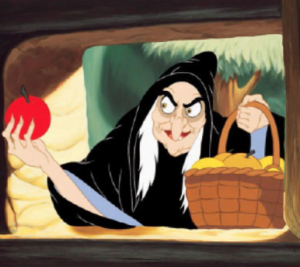The earliest funerary texts we have are the Old Kingdom Pyramid Texts and unlike later texts they did not include images, consisting purely of hieroglyphic text. The underworld described in the Pyramid Texts was very similar to the landscape of Egypt itself with rivers and fields, abundant with crops. The idea of the deceased king and the solar god travelling through this landscape on a boat that these texts described is one that remained central to the beliefs concerning rebirth of the deceased as well as the cycle of the Sun in the centuries that followed. In this context rebirth or resurrection was intended to mean being reborn into the afterlife rather than into a physical form back on Earth. The earliest example of the Pyramid Texts is in the pyramid of Unas of the fifth dynasty (27352345 BCE) and they remained in use until the reign of Ibi, eighth dynasty (21812161 BCE). The texts were only inscribed in the burial and antechamber of the pyramid.
The Pyramid Texts introduce the association between the deceased king and Osiris, the god of the Underworld. In later periods every deceased individual was also referred to as ‘The Osiris. The Pyramid Texts also show a very close association between the deceased and the sun-god Ra as well as introducing the theme of the king’s ascent to the stars. Utterance 461 of the Pyramid Texts describes the king becoming a star and ruling eternally from the sky from amongst his ancestors.
“0 King, may you ascend as the morning star, may you be rowed as the lake dweller, may those who are in the abyss be afraid of you, may you give orders to the spirit … The doors of the sky are open to you, the doors of the firmament are thrown open for you, that you may travel by boat to the Field of rushes, that you may cultivate barley, that you may reap emmer and prepare your sustenance therefrom like Horus the son of Atum.”
The afterlife described within these texts was initially only for the king, although by the end of the Old Kingdom some chapters were also used in non-royal tombs.
This movement away from an exclusively royal afterlife led to the Pyramid Texts evolving into the Middle Kingdom (2040-17782 BCE) Coffin Texts. These texts appeared in both royal and non-royal tombs but maintained the landscape of the afterlife as being similar to the Utopian idea of Egypt with verdant fields and glistening rivers.
The Coffin Texts, as the name suggests, were primarily inscribed on coffins but there was greater flexibility in how these funeral rights were being applied and therefore also appeared on tomb walls, mummy masks, and papyri.
Traditional rituals introduced in the Pyramid Texts, such as the Offering Ritual, in which offerings of food, drink, clothing and ointment were made to the deceased, evolved into a pictorial offering list known as the frieze of objects. This ensured the dead had food and belongings for all of eternity.
There was also a greater emphasis in the Coffin Texts on the heavenly travels of the ba (@ humanheaded bird that represents the mobility of the soul), the nourishment of the ka (the life force of a person) and the preservation of the human remains to ensure they all united in the afterlife. Included in the Coffin Texts was a collection of additional Guides to the Hereafter, the most useful of which was the Book of the Two Ways, which actually included a very helpful map of the underworld.
This map was painted on the base of coffins and depicted two paths: earth and water. The map outlines some of the dangers the deceased will face on their journey to rebirth, which include knife-wielding demons, lakes of fire, and gates guarded by gate keepers that the deceased needed to name to pass. The idea was that having these maps depicted on tombs and coffins would assist the dead in navigating these numerous hazards and trials so that they might find rebirth more easily. Ultimately these paths represented tests that would prove the value of a person’s soul and their suitability to be reborn and receive an afterlife at all. While they might meet demons and monsters, they were not passing through hell as some might think – there was only one afterlife. The true punishment for living a bad life or failing these trials was not eternal hellfire as later religions would depict, but simply ceasing to exist at all.
In the New Kingdom (1570-1070 BCE) a number of new books were introduced that greatly expanded the understanding of the afterlife and to prepare the dead for their journey with incantations to keep them safe. The most wellknown is the so-called Book of the Dead or, as it might be more accurately translated, Spells for Going Forth by Day. There were between 189 and 192 spells contained in the Book and these were based on themes introduced in the Pyramid and Coffin Texts.
The Book of Going Forth by Day was popular with both royal and non-royal members of society and was written by a number of different priests over 1,000 years. The idea behind it was to see the dead return by day from the underworld One of the key scenes to be introduced in the Book of Going Forth by Day was Spell 125, which is commonly known as the Negative Confession. This spell was recited by the deceased before their heart was weighed against the feather of truth representing the goddess Maat by Anubis, guardian of the scales. This was a symbolic judging of the good and bad deeds of a person’s life, that their heart be weighed against the very concepts of truth, morality and justice.
The premise behind spell 125 is that the deceased listed everything they hadn’t done, omitting anything that had been done. An example of the ‘crimes’ not committed includes: “I have done no falsehood, I have not robbed, .. [ have not stolen, I have not killed men, I have not destroyed food supplies, I have done no crookedness, I have not stolen god’s offerings, I have not told lies, I have not taken food, I have not been sullen, I have not transgressed, I have not killed a sacred bull, I have not committed perjury, I have not stolen bread, I have not eavesdropped.” As you can see, the Negative Confession combines trivial and terrible crimes together suggesting they were weighted the same in the heart of the deceased. As an ‘insurance’ policy against any crimes committed but not mentioned, a Heart Scarab was placed over the heart of the deceased. This was inscribed with spell 30b of the Book of Going Forth by Day: Following the confession the deceased is led to the scales in the Hall of the God of the Underworld, where the Weighing of the Heart takes place. The god Osiris oversees the ritual. Anubis, the god of embalming, is shown levelling the scales and Thoth, the ibis-headed god of writing and knowledge records the result.
If the deceased’s heart weighs the same as the feather then it is judged that they lived a just and moral life and they will continue on their journey through the afterlife. However, if their heart is heavier it will be devoured by Ammit, devourer of the dead with the forelegs of a lion, hind legs of hippopotamus, and head of a crocodile. As a result they were sent to a fire-breathing serpent called The Fiery who denied them a body, casting their soul into oblivion. In the New Kingdom a further set of funerary texts were produced known as the Books of the Underworld, which once more provided an afterlife exclusively for the king. These included the Book of the Amduat, Book of Gates, and the Book of Caverns. All were concerned with the 12-hour journey of the sun-god, Ra, except the Book of Caverns, which is divided into six hours. This journey mirrored the journey of the deceased from death to rebirth. All of these books have similarities in depiction showing the sun-god sailing on his solar barque from the western to eastern horizon along the underworld river, the nocturnal counterpart of the Nile. During this journey the sun is rejuvenated until he is reborn at dawn starting a new day and representing rebirth. The sun-god’s progress is consistently opposed by the enemies Ls who are trying to prevent his rebirth. The most prolific is Apophis, depicted as a giant snake, who is continually defeated and restrained throughout the 12-hour journey.


